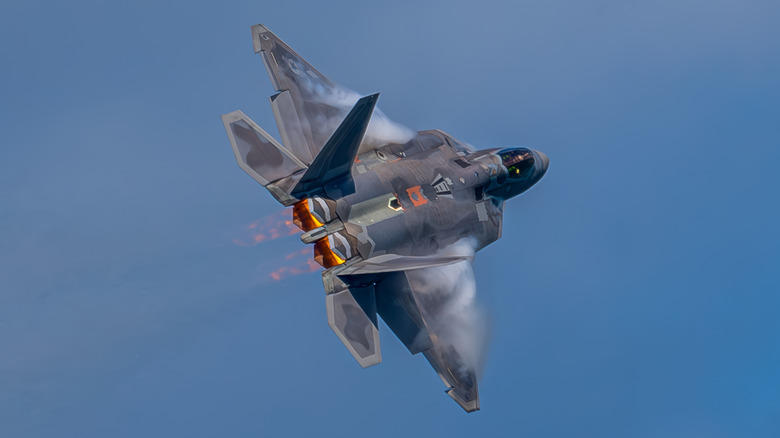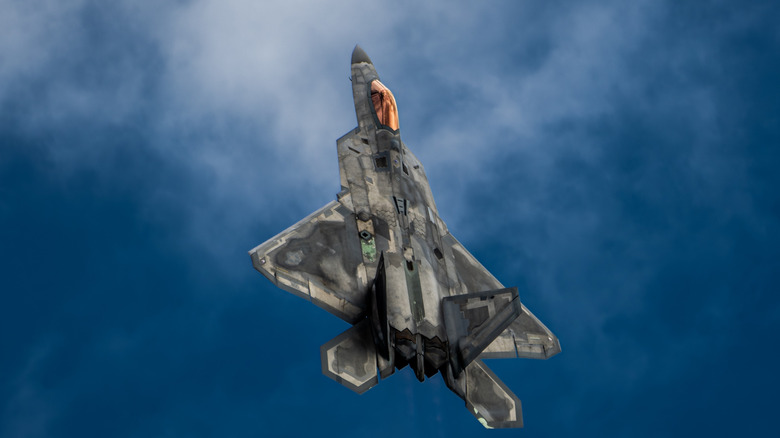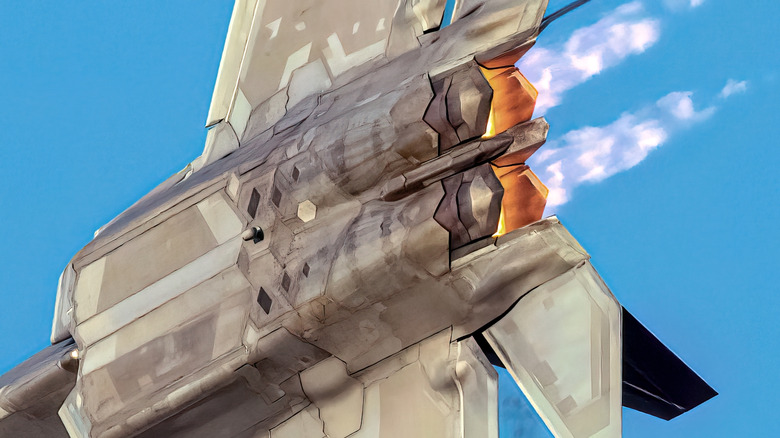How Fast Is The F22 Raptor Fighter Jet? A Look At Its Top Speed & Acceleration Times
While fighter jets are typically associated with blinding speed, the F-22 Raptor is renowned for being among the fastest. Sure, it might not hold a candle to the SR-71 Blackbird, which is currently the world's fastest jet, but it can reach speeds that most other military aircraft only dream of achieving. As one of the relatively recent fighter jets in the American military (it entered service in 2005), the F-22 has served in the Middle East, where it has established a reputation as one of the most lethal air superiority aircraft ever created.
What else would you expect from a fifth-generation fighter jet from the likes of Boeing and Lockheed Martin, one that is only slightly overshadowed by the jack of all trades F-35 Lightning II? As stated, the F-22 is a fast plane; that much is known. However, said knowledge starts to become murky when you ask about exact speed figures, such as exactly what its acceleration times are.
The F-22's speed varies with altitude thanks to factors such as drag that directly oppose flight. The plane shines at higher altitudes, where its speed has been recorded to exceed Mach 2 (equivalent to 1,534 miles per hour). On the other hand, at lower altitudes, the fighter jet's speed is a more modest, yet still terrifying Mach 1.21 (equivalent to 921 miles per hour). Let's talk about it.
Pratt & Whitney's twin F119 turbofans are the key to the F-22's speed
The F-22 program started in 1981. The F-15 needed a worthy replacement, and Lockheed Martin, among other aircraft manufacturers, stepped up to the challenge, designing an air superiority fighter jet that would have the honor of being the world's first operational fifth-generation fighter jet. Alongside Lockheed Martin, which is responsible for some of today's most advanced fighter jets, such as the venerable F-35, was Boeing, which is no slouch when it comes to making military airplanes like the indispensable Boeing CH-47 Chinook.
The two companies collaborated during the design and construction phases of the F-22. While their expertise helped push the F-22 into the realm of the mythical, what truly made it shine was the engines it boasted, engines that weren't actually made by either Boeing or Lockheed Martin. Enter Pratt & Whitney, whose twin F119-PW-100 turbofan engines, each capable of producing 35,000 pounds of thrust, are the primary reason why the F-22 Raptor can exceed twice the speed of sound.
The F-22 doesn't really need its afterburners to break the sound barrier
One of the F-22's most iconic features is its dual engines, which have all the high-end fixings you'd expect such magnificent machines to come with. These include afterburners, which are crucial for the speeds the F-22 is known for, and two-dimensional thrust-vectoring nozzles, which are the reason the craft is as agile and maneuverable as it is. The combined power of the F119 engines also enables the F-22 to cruise at supersonic speeds, allowing the aircraft to operate optimally at these speeds.
The engines are also key for the fighter jet's acceleration times, which vary depending on the level of acceleration at a particular point in time. It takes the F-22 approximately 45 seconds to accelerate from Mach 0.9 to 1.2 at 40,000 feet. However, this time is halved while the craft transitions from Mach 1.6 to 1.9. What's even more interesting about the F-22 is that it can reach and cruise at these supersonic speeds without using its afterburners (supercruise), a feature that certainly puts it in a different league when compared to most other jet fighters in the U.S. military.


